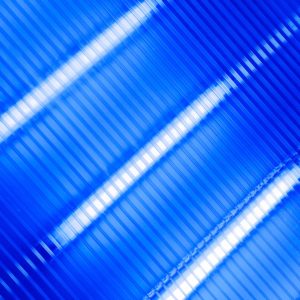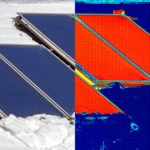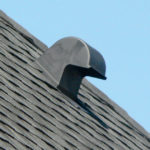 How do you keep your customers’ homes healthy? For starters, you can include wall caps and roof vents that protect a building’s rainscreen. But the building envelope isn’t the only source of contamination. Sometimes the HVAC equipment itself introduces unhealthy microbes into the air. One way to minimize this and ensure good indoor air quality (IAQ) is to install ultraviolet lights in the HVAC system.
How do you keep your customers’ homes healthy? For starters, you can include wall caps and roof vents that protect a building’s rainscreen. But the building envelope isn’t the only source of contamination. Sometimes the HVAC equipment itself introduces unhealthy microbes into the air. One way to minimize this and ensure good indoor air quality (IAQ) is to install ultraviolet lights in the HVAC system.
How ultraviolet light works
Ultraviolet light (UV) is part of the electromagnetic (EM) spectrum, which is organized based on wavelength and frequencies. UV light, with wavelengths ranging from 180 nanometers (nm) to 400 nm, falls between visible light and X-rays on the EM spectrum. About 10% of the light from the sun is UV light. The UV spectrum is divided into three categories: UVA, UVB, and UVC. UVA has the longest wavelengths (315–400 nm) and UVC has the shortest (180–280 nm).
The lights used in HVAC work on the UVC spectrum. UVC radiation can break chemical bonds in a process called ionization in which electrons separate from atoms. This separation causes the atoms to break chemical bonds or form new ones. This process destroys bacteria and molds.
The germ-killing powers of ultraviolet light were discovered more than 100 years ago. In 1903, the Nobel Prize for Medicine was awarded to Niels Finson for his work using ultraviolet light to combat tuberculosis. Germicidal lamps have been used in hospitals, indoor garden operations, at food establishments, and for sterilizing water.
For HVAC application, UVC lights are typically installed inside the air handler where they remain turned on 24 hours a day. Any airborne or surface microbes (molds) within the light’s line of sight will be destroyed.
UVC in HVAC
Ultraviolet germicidal lamps destroy airborne and surface microbes. When installed with HVAC systems, they can:
• Improve heat transfer performance
• Reduce equipment maintenance costs
• Improve IAQ
Microbial buildup, sometimes called biofilm, in coils, plenums, and other HVAC components is a common issue that can impact system performance and introduce contaminants into the air. Microbes can reduce system performance by as much as 25% within five years of installation if left unchecked. In some cases, this equipment is difficult to clean. UV lights minimize this buildup, allowing the equipment to run at its most efficient. The ongoing prevention of microbial buildup will also reduce maintenance costs.
Improved IAQ
According to the American Society of Heating, Refrigeration, and Air Conditioning Engineers (ASHRAE), HVAC systems can either accelerate or slow down the spread of infectious diseases such as influenza, the common cold, and even tuberculosis. With UV lights, building operators can minimize the microbes introduced into the air by destroying them.
In a 2012 study, researchers at Duke University Medical Center and the University of Carolina Hospital System used UVC to kill drug-resistant bacteria in patient rooms. In one example, 98.1% of colony-forming units of bacteria was reduced.
UV light deployment also means that the chemicals typically used to clean biofilm from HVAC equipment will not be introduced into the air, which avoids the introduction of potential respiratory irritants.
Other UV applications
UV technology can also be used in leak detection. The flex inject sealant tool features a UV dye that mixes with refrigerant sealant. The mixture is sent through the system as a mist, and the dye permeates hairline cracks and leaks, which can then be easily identified with a UV light.
By now you may be asking, if UVC is so great, why isn’t it a standard feature in HVAC equipment? One day it might be, but currently, the issue is cost. UVC lights are expensive. And not every household needs UVC lights in their HVAC system. But for individuals with allergies or buildings in humid environments, the additional expense is worth it.



